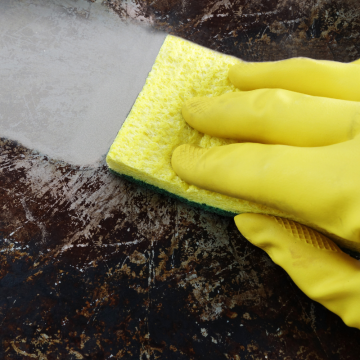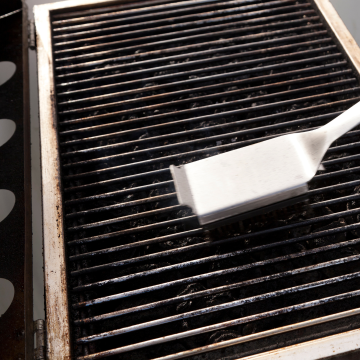Cookies! Everybody loves cookies, right? Well, if you’re reading an article about decorating cookies despite not actually liking cookies yourself, we apologize for overgeneralizing and we salute you for sticking with whatever it is you’re doing. For everybody else, cookies are an amazing thing, and they can be even cooler when they’re decorated with beautiful cookie art.
A Beginner’s Guide to Cookie Art
If you’ve ever seen the scrumptious cookie art that pops up in baking groups and hashtags on social media, you’ll know what we’re talking about. (If you haven’t, go spend a few hours in an Instagram rabbit hole looking at adorable cookie designs and then come back to us.) And while these pros have had years of practice, basic cookie decorating is something that almost anybody can do.
With not much more than a set of the standard cookie and cake decorating tools, you can adorn your cookies with cute designs, too! From festive holiday cookies to wild and kooky experimental designs, there are tons of possibilities and our beginner’s guide to cookie art will show you how to start exploring them all.
What Kinds of Cookies Should You Make?
We’re not here to put a bunch of rules on your confectionery crafting, but there are certain types of cookies that lend themselves more naturally to decorating than others. Thinner, flatter types of cookies that are cut from a sheet of dough generally work best.
Two of the most popular styles of cookies for decorating are sugar cookies and gingerbread cookies. These are good for decorating because they’re relatively simple to make, and they have a uniform consistency and flat top that makes them hold icing easily. Oatmeal cookies can also be a good choice, so long as they’re made using a similar “rollout” method.
What kinds of cookies aren’t ideally suited for decorating with cookie art? Chocolate chip cookies and other “chunkier” cookie styles can be hard to decorate because of their unpredictable surfaces and domed tops. Most decorators also avoid very thin cookies, such as spice cookies, due to how fragile they can be.
Cookie Decorating Supplies
Like all crafts, cookie decorating is a lot easier when you’ve got the right tools on hand. These are some of the tools that a beginning cookie decorator will find most useful:
- Rolling Pin: You need a nice, flat cookie canvas for your confectionery designs, so make sure you have a rolling pin on hand. Some rolling pin models now come with guide rings to ensure that you get just the right thickness.
- Cookie Cutters: Using cookie cutters lets you create your cookies in delightful shapes. If you’re going with specific designs, like holiday themed cookies or flowers, cookie cutters can be a must-have. Keep the shapes on the simple side. Cookie cutters with tiny parts often end up creating messy cookies with burned edges.
- Piping Bag: Dessert chefs typically use piping bags to get icing dispensed perfectly. Many decorators like disposable piping bags for their ease of cleanup, but others prefer reusable models.
- Food Coloring: Vivid colors can be one of the most fun parts of creating cookie art, which is why you should be sure to have some food coloring on hand.
- Decorating Tools: Grab a set of basic confectionery decorating tools if you don’t have one. Those interested in trying more complex decorations should spring for a set with high-quality components that will last, like stainless steel tweezers, styluses and/or embossing tools.
Choosing Your Icing Type
Now, let’s look at one of the most important elements of cookie decoration: getting the right icing. The first type you should be familiar with is royal icing, a special type of icing that many pro confectioners use to create their cookie designs. (If you’ve ever decorated a gingerbread house before, you’ve probably used royal icing.)
Royal icing is a standard choice for cookie art because it’s easy to sculpt, sticky when wet and hard when dry. Fortunately, making royal icing isn’t too difficult. Most recipes require only basic ingredients like egg whites, vanilla extract, confectioner’s sugar and sometimes lemon juice and/or glycerine.
Glaze icing is another popular option for cookie art. Its ultra-thin consistency makes it excellent for things like written messages or wispy designs, and it’s just as easy to make as royal icing — or easier. Ambitious decorators can even make both, to ensure that they always have the right tool for the (delicious) job!
Preparing the Dough
Getting your cookies into a crisp-looking shape requires a little knowledge of dough-rolling techniques. Here’s an easy way to do it:
- Get two pieces of parchment paper sized for the cookie sheet you’ll use. Place one on top of the dough and the other on the bottom.
- Roll the dough out between the sheets of waxed paper, taking care to get it to a consistent thickness.
- Cut the cookie dough into the shapes you want using cookie cutters.
- Chill the dough as required by the cookie recipe you’re using.
- Remove the top sheet of parchment. Now comes the important part: Rather than transferring the shapes individually onto the cookie sheet, just remove the excess dough from around the shapes. Use your cutting tools to help as necessary.
- Take the waxed paper and transfer it to the baking sheet. You’re ready to bake ’em up!
Tips and Tricks for Cookie Decorating
When it comes to actually making the cookie decorations, here are some tips that will help you get the results you’re looking for:
- Make a batch of cookies that’s bigger than what you think you’ll need. This will give you plenty of extras to experiment on without fear of making mistakes.
- Get colorful! One great idea for bringing some visual pop is to whip up multiple batches of icing, each with a different food coloring. Red, yellow and blue will allow you to mix as desired for a whole spectrum of colors!
- Experiment with creating contrast through different line thicknesses and colors. There’s a lot you can do with the relatively simple set of tools we’ve talked about!
- Keep your expectations realistic. Your cookies might not look exactly like a professional’s, but they don’t have to — you’re just gonna eat them, after all! If you’re decorating with kids, this is a good opportunity to talk about how real life doesn’t always match up perfectly with what’s on the screen, and why that’s nothing to be ashamed of.




Leave a Reply